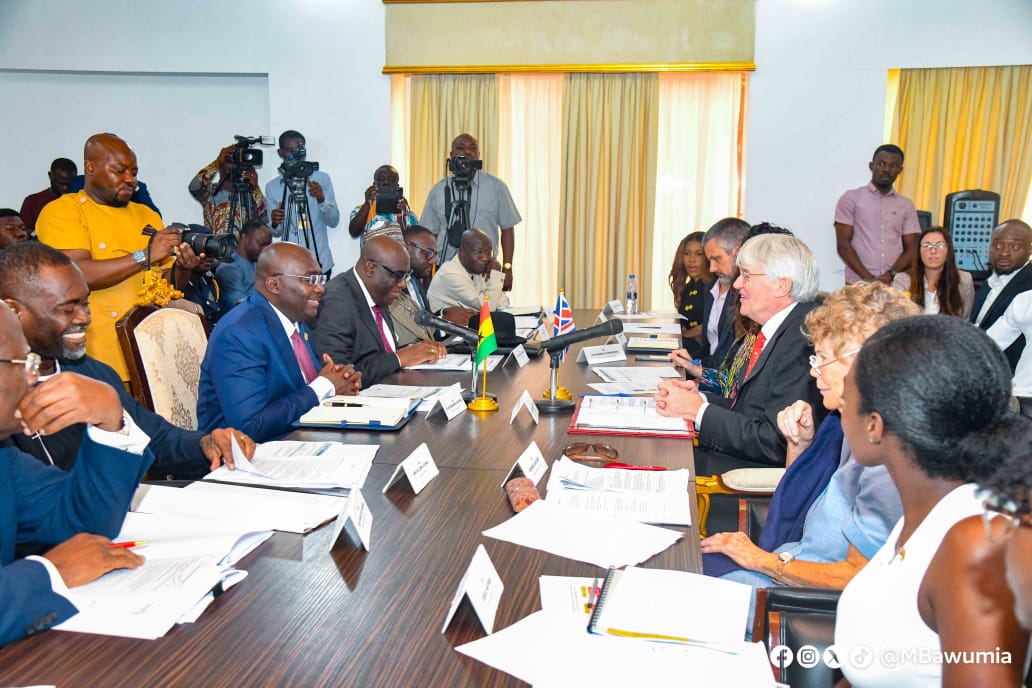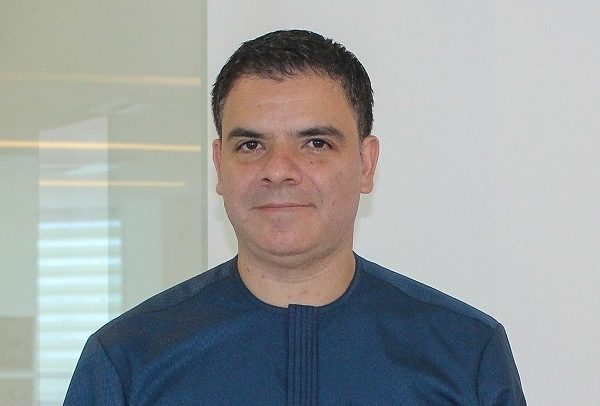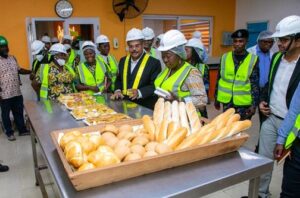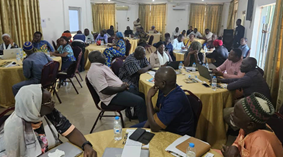
When I stepped off the plane at Heathrow Airport on March 23, 2025, at around 7:30 a.m., via Ethiopian Airlines, after a long journey from Accra, I couldn’t help but feel a blend of excitement and nervousness. The five hours and 40 minutes flight from Accra to Addis Ababa, followed by another eight hours and 40 minutes from Addis Ababa to London, felt like a marathon.
But as I breathed in the crisp London air, I felt it all wash away. A gentle breeze greeted me, carrying whispers of history and innovation. The weather was a cool 12°C (54°F), with a light drizzle that seemed to wash away my jet lag.
I was about to embark on a once-in-a-lifetime journey to London, courtesy of the British High Commission’s initiative to promote science, technology, and innovation (ST&I) reporting among Ghanaian journalists specialising in the field.
In collaboration with the Responsible AI Lab (KNUST/RAIL) at the Kwame Nkrumah University of Science and Technology and the Ministry of Environment, Science, and Technology (MEST), the commission had selected me as one of 10 journalists for further training at the prestigious Imperial College London.
The journey had started with a competitive pitching competition as part of a week-long ST&I reporting training in Accra, which I had won, showcasing my passion for ST&I reporting. Little did I know that this was just the beginning of an incredible adventure.
Upon arriving in London, I was struck by the city’s grandeur and rich history. From the iconic Trafalgar Square to the majestic Buckingham Palace, every landmark seemed to whisper stories of the past.
The towering Elizabeth Tower, formerly known as Big Ben, stood proudly, its chimes echoing through the streets. I couldn’t help but smile at the thought of how many people, both black and white, converge here just to hear the chimes of Big Ben.
In fact, I realised that Big Ben is one of the most iconic landmarks in London. However, many people are surprised to learn that Big Ben is not actually the name of the clock tower itself but the name of the great bell inside the tower. The clock tower is officially called the Elizabeth Tower and is located at the north end of the Palace of Westminster, the seat of the British Parliament.
Big Ben, the bell, weighs over 13 tonnes and was named after Sir Benjamin Hall, the first Commissioner of Works, who oversaw the installation of the bell in 1859. The Elizabeth Tower, which houses Big Ben, was completed in 1859 and was designed by architects Charles Barry and Augustus Pugin. The tower stands over 315 feet (96 metres) tall, making it one of the tallest clock towers in the world.
Big Ben has become a symbol of London and one of the most recognisable landmarks in the world. It’s also a popular tourist destination, attracting millions of visitors each year. Interestingly, Big Ben is not just a clock tower and bell; it’s also a working clock that continues to keep perfect time, thanks to its ingenious mechanism and regular maintenance. Of course, regular maintenance… quite a hassle in Ghana!
Since the London Eye is close to the Big Ben and river Thames, it wasn’t difficult to catch a glimpse of them. The only issue was that there wasn’t enough time to go for a ride. And looking at the river Thames nearly made me teary. Why? In Ghana such rivers have been polluted as a result of illegal gold mining popularly called ‘galamsey’ in the full glare of government officials. Pollution still continues. And, even urban rivers not affected by galamsey have been filled with filth example being the ‘Palleele’ river at Aboabo number one in Kumasi.
Don’t forget, Thames was once heavily polluted during the industrial revolution but it went through significant clean-up efforts, making it one of the world’s cleanest urban rivers today. The need for radical leadership in Ghana.
But my visit wasn’t only about sightseeing; it was about diving into the world of science and innovation.
At Imperial College London, my colleagues and I had the privilege of meeting renowned experts in various fields, from artificial intelligence to biotechnology. The college’s cutting-edge research facilities and state-of-the-art equipment left me in awe.
The visit provided a fantastic opportunity for the team to meet Prof. Hugh Brady, President of Imperial College London, who emphasised the potential of Ghana’s universities to drive economic growth through Artificial Intelligence (AI). He believes that by harnessing the power of Ghana’s universities, “we can unlock new opportunities for economic growth and development.”
“We’re very excited that the Imperial-Schmidt AI Fellows Programme allows us to partner with Ghana. AI is going to be one of the great democratisers of research, and I am very excited about the potential and possibilities for Ghana,” he said.
According to Prof. Brady, the partnerships with Ghanaian institutions will focus on grand challenges such as pandemic preparedness, infectious diseases, food and water security, and future cities.
Through a series of lectures, workshops, and interactive sessions, I gained invaluable insights into the latest scientific breakthroughs and innovations. I also had the opportunity to network with fellow Ghanaian masters and doctoral students at the college, sharing experiences.
It was quite an interesting interaction as we were all talking and laughing about a lunch that was promised to us the previous day. There was the anticipation of something more substantial with African taste. But big disappointment. This lunch turned out to be biscuits, fruit juices, and slices of bread specially prepared for vegans and vegetarians, etc. Perhaps, I was the target as I am a vegan.
You can imagine what I mean. Mr Sylvester Egyir, a Ph.D. candidate, could only remark: “Ah, Ghana is sweet… there is no place in Ghana where such a lunch would be served.” We all burst into laughter.
We also had a meeting with Prof. Majid Ezzati, a leading expert in Global Environmental Health. He welcomed the delegation warmly, sharing his passion for Imperial Global Ghana, a regional hub aimed at strengthening research, education, and innovation collaborations across West Africa. We also met Dr Leon Barron, whose team is pioneering clean air monitoring and sustainable solutions in Ghana.
One of the highlights of the trip was a visit to the Polymateria Laboratory, where we discovered the world’s first biodegradable technology capable of fully breaking down polypropylene (PP) and polyethylene (PE) materials.
My time in London was a whirlwind of discovery, learning, and growth. As I returned to Ghana, my colleagues and I, in fact, felt inspired and rejuvenated, equipped with new knowledge, skills, and perspectives to enhance ST&I reporting.
I am grateful to the British High Commission, KNUST/RAIL, and MEST for this incredible opportunity. The experience has not only broadened my understanding of science and innovation but has also deepened my appreciation for the rich cultural heritage of London.
And it was quite great that as we began our journey, we were accompanied by officials from MEST, Mrs Gloria Holmes-Graves, KNUST/RAIL, Ms Gifty Antoinette Hukpati, and Mr Johnson Masagotin Singir, from the British High Commission, who had been ahead of us to prepare the grounds for a smooth take-off.
I look forward to sharing my experiences and insights with my audience, inspiring a new generation of scientists, innovators, and science enthusiasts in Ghana and beyond.
BY KINGSLEY E. HOPE
The post Discovering London: A journey of science, technology, and wonder appeared first on Ghanaian Times.
Read Full Story














Facebook
Twitter
Pinterest
Instagram
Google+
YouTube
LinkedIn
RSS